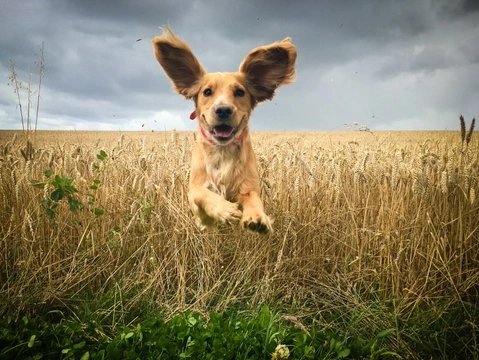
What your dog’s ears can tell you about their origins!
Different dog breeds and types of dogs can look significantly different to each other, in terms of everything from size and conformation to colour, fur texture, the position and shape of the tail, the structure of the muzzle, and pretty much anything else that you can think of. It can be hard to believe sometimes that every breed and type of dog are part of the same species, and in some cases, you have to go quite a long way back on the evolutionary ladder to find a common ancestor and link.
Because dogs have lived for millennia in virtually every corner of the world, they have evolved throughout this time to survive and thrive within their native environment, and the way that dogs from different parts of the world and with different types of living conditions have evolved goes a long way towards explaining some of their most common physical differences.
While some physical traits of dogs have occurred due to human input in the form of selective breeding and breed typing-for instance, the appearance of some of today’s modern English bulldogs is vastly different to that of the breed just 100 years ago before we humans started messing about with the breed in earnest-most dogs who have a largely natural appearance are a result of their geographical evolution.
How the climate and geography of your dog’s place of origin affects their physical appearance can be seen in all manner of ways, from the coat colour and texture to the shape and position of the tail and everything else-but one of the most telling indicators of a dog’s climate and conditions of origin is their ears!
In this article, we will examine what the shape, position and appearance of your dog’s ears can tell you about their origins, and why they evolved in the way that they did. Read on to learn more.
What do the ears do?
The obvious answer to this question is that the ears are used for hearing, and this is certainly true! However, the ears also fulfil other roles too, including serving as a surface for heat exchange, helping to protect the inner structures of the ears from debris, and to judge the direction of the wind!
Exactly what any dog needs from their ears in this respect will depend on where they come from and what their lifestyles in the wild were like-and so next, we will look at how certain ear shapes suit certain breeds of dog in an evolutionary sense, and why.
Very large, smooth pointed ears
Large pointed ears such as those that you can see on the unusual Cirneco Dell Etna dog breed and the Ibizan hound, among others, and designed for life in hot, arid climates. The physically large surface area of the ears means that all of the many tiny capillaries and blood vessels in the ears lie close to the surface of the skin, providing an effective surface for heat exchange to help to keep the dog cool. The hair on the ears too is very fine and short, even compared to the short, fine fur such breeds have on the rest of their bodies-ultimately, this provides protection from the sun, without warming the dog up.
Additionally, the shape and structure of the ears forms a kind of amplifying speaker to the ear canal, giving such breeds a very finely attuned sense of hearing that can pick up very quiet or distant sounds too.
Floppy, hairy ears
Most spaniel breeds have large, floppy ears with lots of long fur on them, like the cocker spaniel’s long tangled curls. This type of ear structure reflects many things about the cocker spaniel’s history as a working dog breed in the UK, including the climate, geography and type of activity that the breed is known for.
Historically, working cocker spaniels were used for hunting and retrieving in the British countryside, often passing through thick undergrowth and rough terrain when on the hunt. The fact that the ears are drooping rather than erect helps to protect the ear canal from debris such as seeds and burs that might otherwise work their way inside of the ear, and the thick and long hair on the outside of the ear helps to protect the ears from scratches and injuries, and channel rain away.
Additionally, when the dog runs, the ears flap behind them, providing a cooling effect to the wide surface area of the outer ear and helping to keep the dog’s temperature stable and prevent overheating.
Small, pointed hairy ears
Dog breeds that have very hairy pointed ears that are on the small side in comparison to their size-such as the Siberian husky-tend to originate from climates that have very cold weather and driving sleet, hail and snow. The small size of the ears means that they do not lose too much heat, and the thick, plush fur of course also provides insulation, as well as protecting the ear canal from sleet, hail and debris that might otherwise cause earaches and other problems.



